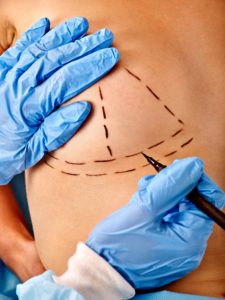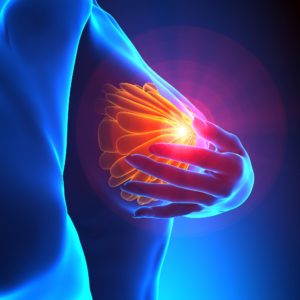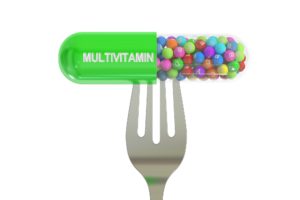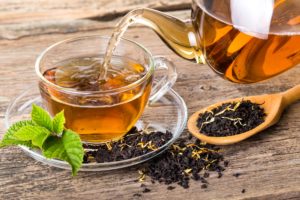
This is part 2 of a 3 part article on typical breast cancer myths, especially as they relate to breast cancer treatments and the NEED for breast cancer treatments. Just remember to keep your mind open.
About Breast Cancer Awareness: Types of Breast Cancer
This section is one that everyone should pay close attention to and helps to explain how emotions are played upon to wreak probably the most heinous miseducation on woman since hormone replacement therapy was pushed based on no evidence to back up its purported benefits.
Ductal and Lobular Breast Cancer
The two main types of cells that become a problem in the breast are the cells of the milk ducts (ductal) and the cells of the lobule portion of the breast (lobular). The lobular region of the breast is where the glands that produce breast milk are located. The ducts are then the cells that line the tube where breast milk is delivered to the nipple.
These cells divide as part of their everyday activities. However, there are certain damages that can happen to the DNA of any cell that can lead to abnormal growth. This damaged DNA is transferred into new cells as they are made off the original damaged DNA cell. Thus begins unchecked cancerous growth.
There are different stages of this growth, but in general, the less a cancer cell looks like it’s original parent cell, the more dangerous the cancer is. At the very beginning of the spectrum you have atypical cells that have begun to behave differently but are not really considered “cancer” just yet.
In many cases, these atypical cells can revert to normal or they can be detected and destroyed by a healthy immune system.
In-situ Breast Cancer
The term “in-situ” refers to abnormal tissue that is on the surface. It has not broken through the layer underneath the cell. This means that it does not have access to the bloodstream to become invasive. This type of cancer is generally referred to as localized and fits into Stage 0 and has the best 5-year survival rates (more on this fallacy later). It is also the most common type of breast cancer diagnosed (just over 61% of cases).
Here’s the most important thing you can understand. In situ cells are NOT cancer. It means that there is a group of abnormal cells. The best analogy would be having an abnormal pap smear. An abnormal pap smear doesn’t mean you have cancer—it just means that abnormal cells have been found and we need to keep a closer eye on the region.
Does this mean that you should blow off a diagnosis of ductal carcinoma in situ (DCIS) and go buy a pack of cigarettes to celebrate your longevity? Of course not. But the thought process on this decision will become clearer in a little bit.
Both ductal and lobular cells can be diagnosed in situ (DCIS and LCIS). It will take some time for a group of abnormal cells (stage 0) to become a larger mass. Once enough abnormal cells have gathered together to form a mass, but that mass is still less than 2 centimeters (the size of a peanut), it has now progressed to Stage 1.

Invasive Breast Cancer
Invasive breast cancer is something to worry about and there is no controversy about whether invasive cancer should be treated. This occurs when in situ cells grow towards the basement layer of cells and break through, allowing the cells to spread throughout the body.
If the cancer cells have reached the lymph nodes, the cancer is termed regional and accounts for about 31% of the cases diagnosed with breast cancer.
From here it only gets worse and outcomes are progressively worse. Once the invasive cancer has spread past the lymph nodes to other areas it is now termed Distant. If you remember from part one of this article, this is the type of cancer that is being found more and more often in women under 40.
Hormone Sensitive Breast Cancer
One of the main factors that plays a role in treatment approach and survival is whether or not the tumor is hormone sensitive.
On both the cell membrane and the DNA there are receptors. When a trigger (like a hormone), lands on a receptor, it causes changes in the way a cell behaves. With estrogen, one of the changes will lead to a cell dividing.
If this is a tumor cell with damaged DNA, this is going to be a very bad thing.
In estrogen receptor positive breast cancer (ER-positive), that cancer cell produces more estrogen receptors on its surface; almost like it’s looking for more input to allow the cancer cell to divide. This is a perfect scenario for the progression of the cancer. Treatment of breast cancers that are ER-positive involves the use of drugs like Tamoxifen to block this receptor site.
The role of progesterone receptors (PR) in breast cancer is not as clear. Some feel that it may have more to do with how the PR interacts and affects the estrogen receptor. There are no direct treatments for PR+ breast cancer; instead, they fall under the same treatments as ER+ breast cancers noted above.
HER2 is another receptor that is found in higher number in about 20-30% of breast cancer tumors. The HER2 receptor also stimulates rapid cell growth which would will promote tumor growth. Herceptin is the blockbuster drug that was designed to treat HER2+ breast cancers.
When you hear that a tumor is ER+/PR+, HER2+, triple positive or triple negative, these are the hormones that are referred to. The hormone receptor negative and triple negative breast cancers are harder to treat. Because of this, prevention of these types of cancers is even more important.
Progression to Invasive Cancer
Out of this entire 10,000+ word article, this section is THE most critical to understand. And I also feel that this is where the money in cancer research should be going. Almost ALL of it. But alas, very few research dollars find their way answering this incredibly important question:
Which in situ cancers will progress to become invasive?
As you’ll find out in the next section, only a small percentage of in situ cancers will ever become invasive. In some studies, this number is less than 8 out of 1,000, in some it’s as high as 78% (quite a range, I know). The controversy on this statistic is one that will probably forever remain a point of argument and one that we may never actually get a solid answer on because the idea of withholding “life-saving” treatment when it is available is a hard sell.
The take home message is that there would be nothing more important to discover than whether your DCIS was going to become invasive. After all, some 15% of women have DCIS present on autopsy (in other words, a good chunk of women die WITH DCIS not FROM DCIS).
Given that there is a large chunk of women diagnosed with DCIS who are given billions of dollars in treatment (collectively), what if we instead shunted this money to research to looks for markers that will help identify who will and will not progressive to invasive cancer?
The organization that would take this goal as the Holy Grail of cancer research is one that I would happily donate to. Unfortunately, most cancer organizations are all about screening (we’ll see why this is such a problem in a minute) and finding spectacular (and expensive) new treatments for cancers that might never even develop into a problem.
Now that I’m off my soapbox, I can cover a few of the things that we DO know about this progression to invasive.
Again, there is not a lot of information on this topic and the most solid information comes from information gathered during and after surgery.
When an area is discovered on mammography (or when found on breast self-exam—these are from earlier studies done because very often DCIS lesions found on today’s high-sensitivity mammography are too small to be felt) and surgery is done to remove the lesion (sometimes is it too small to be called a “mass”), the details surrounding this procedure gives us important clues.
The Van Nuys Prognostic Indicator (VNPI) is probably the most accepted tool for gathering information about whether a DCIS lesion will become invasive or not. Here are the details:
- Patient age. The younger a woman is, the more concern because the lesion will have more time to grow. Under 40 is greatest concern, 40-60 is next and over 60 is the least concern.
- Tumor size. Smaller is better. Larger than 40 mm is the greatest concern and less than 15 cm on the other end.
- Tumor margins. The larger the space between the end of the lesion and healthy tissue the better. More than 10 mm space is best. Less than 1 mm is greater concern.
- Pathological grade. This is a grading score given by the reading pathologist. This area is a wee bit more complicated and can be more subject to interpretation over the previous 3 factors. Grade 1 is best and grade 3 is the greatest concern.
This scoring system can help give you an idea about whether that lesion that was discovered when it was removed is likely to become invasive. And right now, despite all kinds of controversy over the VNPI, it’s all we’ve really got.
Many doctors will tell you that the scoring system is pointless—all DCIS needs to be treated. If it recurs, treat it again.
That’s easy to say for a male doctor who will never suffer lung damage from over-radiation during treatment.
Personally, I think this is THE most important question we can ask in our cancer culture today. For such an important question, we have very little answers. The best we can do is make lifestyle choices that are anti-breast cancer. I’ve covered many of these in last week’s part one blog article (in case you missed it, you can read it by clicking here), but the next section will go into even more.
Breast Cancer Treatments: Improving Breast Cancer Survival
The list of breast cancer treatments that will improve the survival outcomes of someone with breast cancer is pretty darn close to the list of the things we covered in the prior section to prevent breast cancer in the first place.
Besides things to increase your chance of a good outcome, if you have been diagnosed with breast cancer or are a breast cancer survivor, there is something else critical that you need to understand. And it is likely that this critical point has not been made clear to you by your oncologist or any of the national cancer organizations.
Once cancer develops in your body, it is a clear sign that the situation was ripe for cancer to develop. Where it develops first is different in everyone, but cancer is NOT local. It is NOT a situation that happens in just the breast or just the colon or just the pancreas.
This means that merely addressing the tissue that was diagnosed with surgery or radiation did not solve the real problem—only the immediate one.
The most critical thing any cancer survivor can do is to COMPLETELY OVERHAUL THE LIFESTYLE THAT PUT CANCER THERE IN THE FIRST PLACE.
This is not an option. If you truly want to “beat cancer” and not spend the rest of your life looking back over your shoulder for a recurrence, scared to hear the results of every follow up imaging test, then you HAVE to make changes.
The same lifestyle that leads to cancer is not going to help you become a survivor. Cancer outcomes without lifestyle changes is just a hair better than luck.
Breast Cancer Treatments: Healthy Lifestyle and Survival from Invasive Breast Cancer
We already know that there are very close associations between all chronic diseases. Patients with heart disease are more likely to have colon cancer. Diabetic patients are at a much greater risk of pancreatic cancer. This list of linked chronic diseases goes on and on.
There are many studies that have looked the breast cancer treatments and choices that lead to better survival rates in women diagnosed with breast cancer. This study looked at survival rates almost a decade after a diagnosis of invasive breast cancer. Here’s what researchers found:
- Better quality diets were linked to a 26% lower risk of dying from any cause and a 42% lower risk of death from non–breast cancer causes (not a real big surprise, overall).
- Overall breast cancer death was 9% lower (doesn’t sound impressive unless you’re the survivor).
- But, for women who had been diagnosed with estrogen receptor positive tumors their risk of dying from any reason was an impressive 45% lower.
For those of you really interested in 12 standards that make up the “Healthy Eating Index” referred to in this study, you can find a synopsis of the details by clicking here. These standards are pretty basic and easy to adopt.
So, if easy standards like this can have a large impact on survival, imagine what more specific lifestyle choices can do.
Some of these choices can be as simple as adding certain healthy foods into your diet.
As an example, flavonoids are a very large class of healthy compounds found in the fruits, vegetables and spices we should be eating. In general, they provide thousands of options for improving your health and lowering your risk of chronic diseases, including being diagnosed with breast cancer.
Just how strong are they? One study looked at the risk of dying from breast cancer after a diagnosis of invasive breast cancer as it related to the dietary intake of specific types of these flavonoids. Here what they found:
- In women with the highest intake of flavones (found in certain spices, celery, citrus peels), there was a 37% lower risk of breast cancer mortality.
- Isoflavones (found in soy—more on this later) was linked to a 48% lower risk of breast cancer death.
- Anthocyanidins (found in berries) showed a 36% reduction in dying from breast cancer.
These food compounds are not hard to incorporate into your diet just by being a little more creative. By increasing your intake of these foods, you can lower your risk of dying from invasive breast cancer by more than chemotherapy and radiation without the toxic side effects.
Breast Cancer Treatments: Diet for Hormone Sensitive Cancers
While this section in general is looking at how to increase survival, I have mentioned that lifestyles that lower your risk of developing breast cancer in the first place will also function as natural breast cancer treatments for improving your breast cancer survival rates.
As I’ve already mentioned, hormone negative breast tumors are harder to treat with standard breast cancer treatments. This means that a lifestyle that can lower your risk of hormone negative cancers is important.
In one study, researchers used diet patterns to evaluate the risk between the risk of breast cancer and diet. Here’s what they found:
- The plant-based pattern, high in fruits and vegetables, lowered overall breast cancer by 15%, but, for hormone receptor negative tumors, the protection was stronger at 34% lower risk.
- What came as an initial surprise, however, was that the salad and wine pattern, high in lettuce, fish, wine, low-fat salad dressing and coffee and tea, led to a 29% higher risk of ER+/PR+ tumors.
You may question how a good diet, like salad and wine, could increase the risk of breast cancer. But let’s look at what many consider a “salad.” Iceberg lettuce, maybe a tomato and low fat dressing. What did they replace the fat with in these “healthy” dressings? High fructose corn syrup.
In the first portion of this article, we saw how important good quality fat was to overall cancer risk. Avoiding olive oil in salad dressings will not give you this protection. And, in this next section, we’ll see how the high fructose corn syrup could increase risk.
Breast Cancer Treatments: Insulin, Prediabetes and Breast Cancer Survival
Prediabetes increases your risk of pretty much every chronic disease, breast cancer included. Part of this reason is because insulin levels in the blood stream go increase to control the higher sugar intake. Insulin is proliferative in nature—it causes cells to divide more.
More cell division in a breast cancer cell with damaged DNA is not a good thing. Ultimately, with enough time, this will lead to cancer.
If there is any one thing you could do to improve your chance of surviving for as long as you would hope for (5-year survival rates are really just to see if a treatment worked in the short run), it would be to live an anti-diabetic lifestyle.
There would be few things as powerful as this approach.
A full outline of an anti-diabetic lifestyle is beyond the scope of this article, but here are a few tips:
- Avoid refined carbs like the plague (enriched wheat flour, high fructose corn syrup, just plain sugar)
- Decrease your intake of unhealthy fats (hydrogenated oils, omega-6 fats, animal fats) and increase your intake of healthy fats (raw nuts and seeds, wild caught fish, fully grass fed beef, omega-3 eggs, fish oil supplements, avocadoes)
- Regular exercise, to include both strength training and short burst aerobic (you can read my previous article on exercise by clicking here)
- Cutting back on calories anywhere you can
- Be careful of toxic chemical exposures like BPA in plastics and thermal cash register receipts (you can read my prior article on toxicity by clicking here)
If you’d like to know more, feel free to pick up my Diabetes Prevention eBook on Amazon by clicking here.
The disturbing part about the relationship between the way we handle sugar (diabetes and prediabetes) and breast cancer treatments is how rare it is for patients to hear about it from their oncologists. For me, this is very disturbing, considering that we have known about this relationship for a very long time. The first time I brought up the link between prediabetes and breast cancer was in late 2000–over 15 years ago.
Breast Cancer Treatments: Lifestyle Lowers Risk 80%
In the past, I have volunteered in the medical tent at the Susan G. Komen 3-day events helping injured walkers. There were a fair number of 20-something walkers that were honoring their mothers with breast cancer. Whenever I asked what they were doing to protect themselves from developing breast cancer, most were not even aware that you can do anything beyond annual mammograms.
Maybe I live in my own little bubble, but are we that disconnected in society that we don’t think we can prevent cancer?
This view could not be further from the truth. Living a “healthy lifestyle index” (moderate and/or vigorous-intensity physical activity, low consumption of fat, processed foods, refined cereals, complex sugars, and the avoidance of tobacco smoking and alcohol consumption) the protection against breast cancer was remarkable:
- Premenopausal women who had the highest scores on the Index had a 50% lower risk of breast cancer.
- Postmenopausal women??? A massive, cancer destroying 80% lower risk of developing breast cancer. Forget “stamping out cancer.” This smashes it before there is anything to treat.
Once again, this Health Lifestyle Index was pretty darn basic, but it was powerful enough to derail a woman’s chance of being diagnosed with breast cancer.

Natural Breast Cancer Treatments: Multivitamins
In Part one of this article, I covered the links between supplement use and lower risks of being diagnosed with breast cancer. But can supplements help improve outcomes in women already diagnosed with breast cancer?
One study looked to answer this very question. Researchers looked at a large group of 2,236 women diagnosed with early-stage breast cancer (Stage I ≥ 1 cm, II, or IIIA). Here’s what they found:
- 54% of women used daily vitamin supplements before they were diagnosed and 72% used multivitamins after they were diagnosed with early stage breast cancer.
- Daily vitamin supplements used after diagnosis led to an 8% lower risk of breast cancer recurrence as well as an 8% lower risk of dying from any cause.
- But, if women had used daily vitamin supplements before AND after diagnosis, there was a 24% lower risk of recurrence of breast cancer and a 21% lower risk of dying from any cause.
- This protection, however, was only seen in women who had been treated by radiation only as well as those treated with both radiation and chemotherapy.
- Even more importantly, the women who consistently used daily vitamin supplements before and after breast cancer diagnosis AND ate more fruits/vegetables AND were more physically active had better overall survival.
This study has some incredibly important take home messages:
- If you are not already taking daily vitamin supplements, start. And make sure you are taking a good quality multivitamin (if you need help figuring this out, check out my Multivitamin Myths article that can be read by clicking here). The average person is taking a crappy multivitamin. If we see this kind of benefit from a crappy multivitamin, what kind of benefits will high quality daily vitamin supplements get you?
- If you choose a mainstream medical breast cancer treatments (surgery, chemo and/or radiation) it should not be used alone. Natural breast cancer treatments NEED to be added to give you the best chance for survival.
- Lastly, I have said again and again and again that natural approaches to breast cancer treatments are not about using a single approach. It needs to be a part of a comprehensive approach that adds aspects of diet, supplements and exercise to have the greatest effect. The results of this study nails
Just in case this is not convincing enough for you, there was yet another study done on almost 5,000 women in China looking at daily vitamin supplements in women undergoing breast cancer treatments. They were followed for an average of 4.1 years.
Taking vitamin C, vitamin E and a multivitamin led to an 18% lower risk of cancer death and a 22% lower risk of breast cancer reoccurrence. This protection was present even when women stopped taking the vitamins during chemotherapy (most likely at the advice of an oncologist who didn’t know any better).
Breast Cancer Treatments: Drinking Your Way to Better Outcomes
For those of you who instantly thought this section was going to point out that mojitos, Jack and Coke, wine and beer were good for breast health, I’m going to hate to disappoint. (note: while alcohol generally increases your risk of breast cancer, my last article DID point out ways to avoid this risk)
When we talk about healthy lifestyles for breast cancer, so many people think of food and exercise. But don’t forget that what you drink during the day can increase or lower your risk. Plastic water bottles, for instance, WILL increase your risk of breast cancer.
Coffee
In the first part of this article, I pointed out that the strongest genetic risk factor that we know of for breast cancer are the BRCA1 and BRCA2 genes. But, there are lifestyle choices that have been shown to essentially get rid of the extra risk from these genes.
In this case, coffee was shown to lower the extra risk from the BRCA1 and BRCA2 genes in a study looking at 1,690 women across 4 different countries. Here’s what they found:
- 1-3 cups of coffee per day led to a 10% lower risk.
- 4-5 cups per day led to a 25% lower risk.
- 6 or more cups?? A whopping 69% lower risk.
- This benefit was ONLY seen with caffeinated coffee.
After you lift your jaw up off the floor from this astounding information and run to the phone to call and cancel your double mastectomy, take note that HOW you drink your coffee can make all the difference. In other words, straight up black is unquestionably the best. The less you can put in there, the better. Creamers with hydrogenated oils and pouring in either sugar OR artificial sweeteners will push you on to the path to diabetes, and I just pointed out how bad that was.
These days there are all kinds of non-dairy based creamers made out from soy, almond or hazelnut that are far better options that creamers that have been available in the past. If you need your coffee a little sweeter you could also consider using local honey that you could purchase at your local health food store or Amazon (check out some local honeys on Amazon by clicking here).

Green tea
I can’t say enough about how much of a fan I am of tea. It is what my family consumes the most above all else. Luckily, the research on tea’s health benefits is quite extensive and convincing. In general, whatever black tea does, green tea does better and whatever green tea does, white tea does better. In our family we go through so much iced tea that we don’t stick with any particular type of tea—we cycle through them all.
A study in China looking at over 3400 cases of breast cancer evaluated how much green tea led to lower breast cancer rates. Here’s what they found:
- Regular drinking of green tea was associated with a 12% lower risk for breast cancer.
- For premenopausal women, more years of drinking tea as well as higher amounts of tea drinking led to even stronger protection.
Our family does our best to stick with organic, unflavored tea. The amount of products that are available has definitely increased over the years. Now, brands like Tazo, China Mist, Tumi and www.EspEmporium.com are all companies that have a great variety of fantastic organic teas.
While drinking tea and drinking coffee will not single-handedly fight off cancer, but it is a strong part in breast cancer prevention as well as natural breast cancer treatments. And you’re drinking already anyway, so why not incorporate something that is going to have a definite benefit of lower your risk of breast cancer (and all cancers, for that matter)?
Tamoxifen Breast Cancer Treatments
Tamoxifen?
Shouldn’t this be in the “protect” category?
Tamoxifen is what is known as a selective estrogen receptor modulator, or SERM. It essentially blocks the action of estrogen on the cell so that it can’t fire off that signal that causes the cell to divide more. This is the rationale behind the use of Tamoxifen.
But, much like EVERY other situation where you try to chemically mess with the way our bodies were designed to work, there are consequences.
It turns out that, if you are given Tamoxifen to prevent the recurrence of a hormone-sensitive cancer in one breast, if you later develop cancer in the other breast, that form of cancer will be much more aggressive.
To get specific, one study found that, while Tamoxifen will lower your risk of a ER-positive breast cancer recurrence in the same breast (by about 20%), it will massively spike your risk of developing ER-negative breast cancer in the other breast by 490%.
While there is controversy about whether there really is an increased risk, I must point out that there is no downside to lowering your risk of breast cancer recurrence using lifestyle.
There have been other studies that have added to the concern over the use of other SERMs in addition to Tamoxifen. One study looked at both Tamoxifen and Raloxifene use to prevent breast cancer from developing in high-risk women.
Just how well did this work out?
- Tamoxifen and Raloxifene reduced invasive breast cancer by 7 to 9 cases in 1000 women over 5 years (in other words, less than 1% of women saw a benefit).
- But, despite the paltry lowering of invasive breast cancer risk, neither drug reduced deaths from breast cancer.
- Blood clots were increased by 4 cases for every 1000 women treated.
- Tamoxifen increased the incidence of endometrial cancer and cataracts.
This is medicine’s idea of breast cancer “prevention.” In no way, shape or form do pharmaceutical drugs that are foreign to the human body “prevent” anything. Any “prevention” will be balanced out by an increased risk of something else that may be just us bad.
Conclusion
Although the attitude seems to be changing, for a very long time oncologists poo-pooed the idea of using any type of natural approach during traditional cancer treatment. Personally, I think that this is because oncologist have had the opinion that the toxic drugs and high dose radiation used are THE most powerful tools available and anything else is like peeing on a forest fire.
But maintaining an attitude that natural approaches are worthless during traditional approaches, given how much research we now have supporting them, should be considered malpractice. While this is a strong statement, look at the evidence in this section at how powerful natural approaches are for preventing breast cancer recurrence and deaths from breast cancer. If you have been diagnosed with breast cancer, wouldn’t you want the best outcomes for yourself???
While I had originally intended for this to be a two-part article, there is just way too much to share in the next two sections to add them to an already lengthy article.
The last part of this article will cover two sections that are the most controversial
 Sign up for Bogash Life ‘N Balance and instantly receive a free copy of the eBook:
Sign up for Bogash Life ‘N Balance and instantly receive a free copy of the eBook: